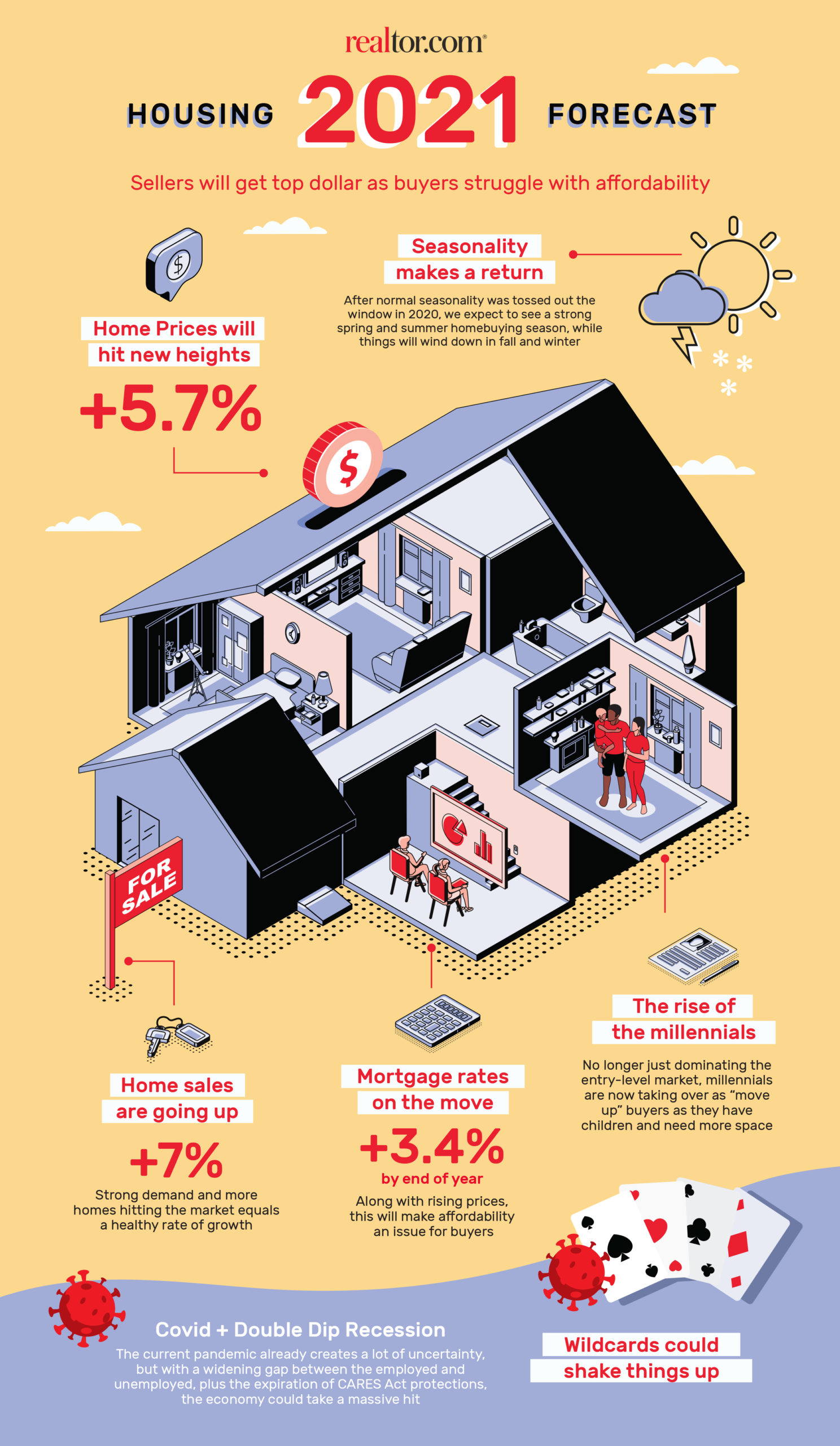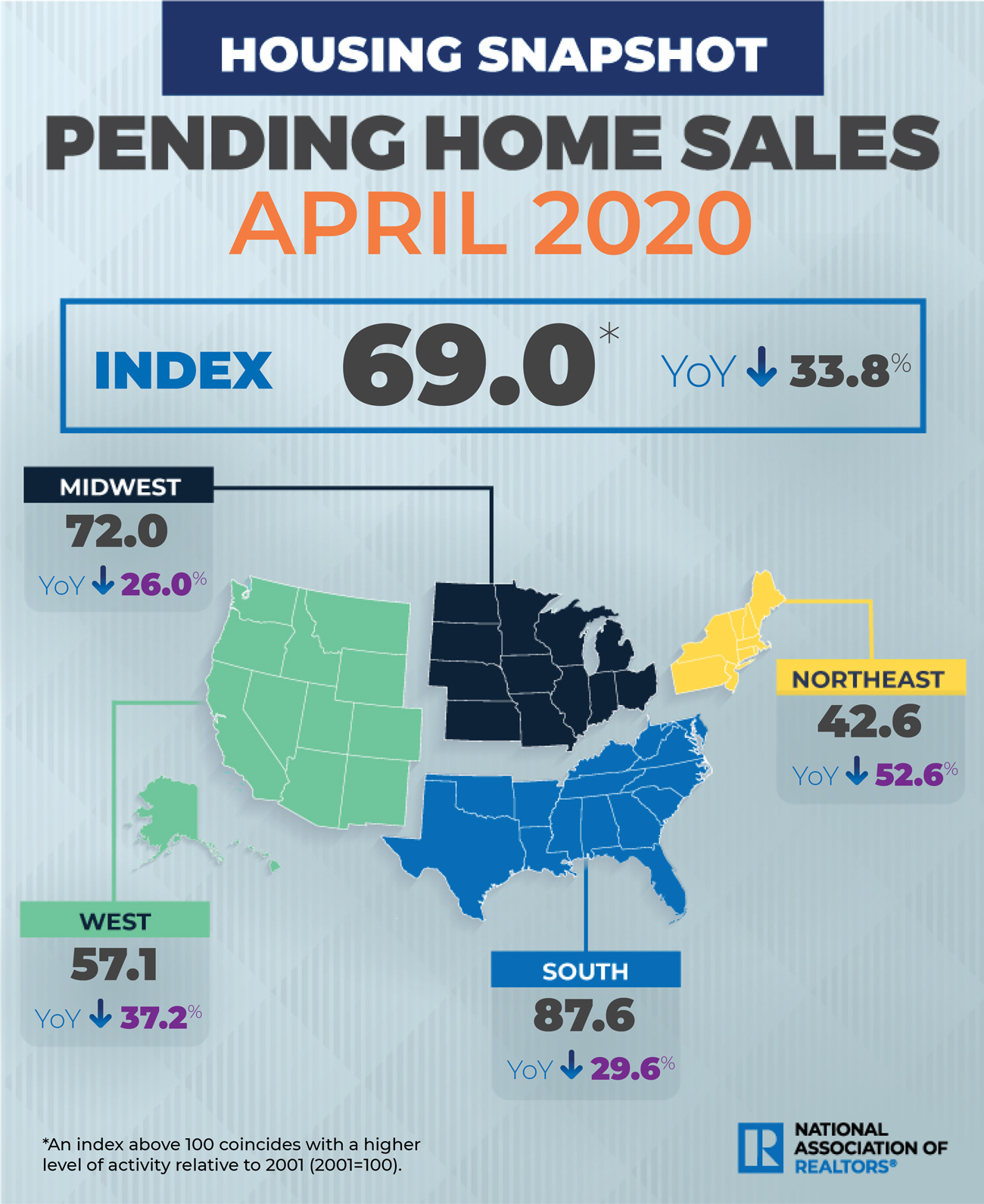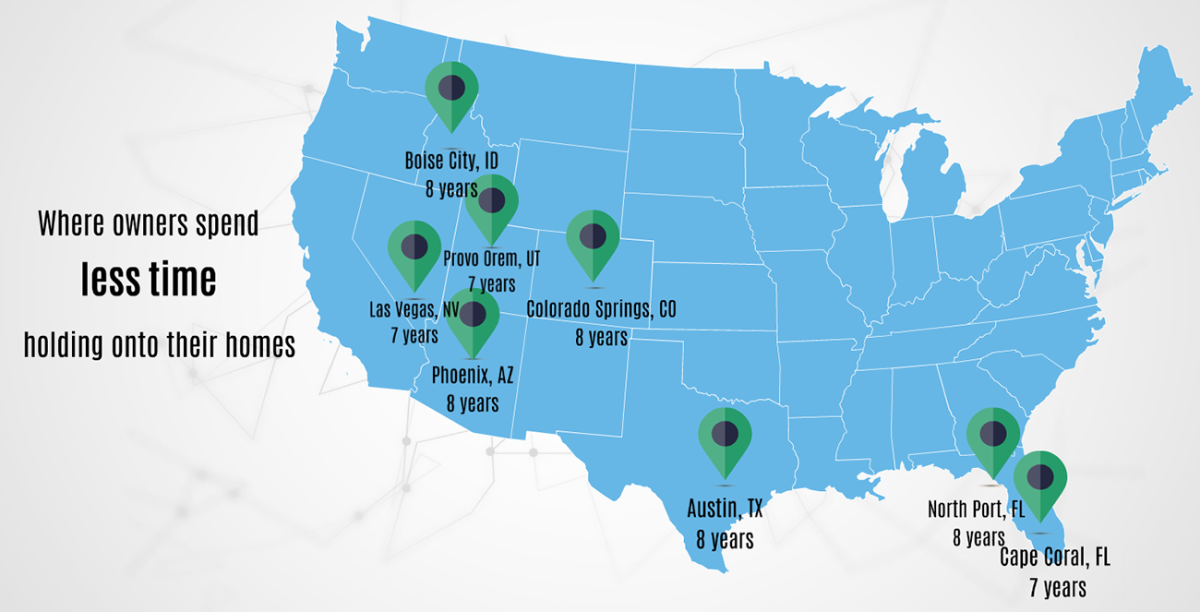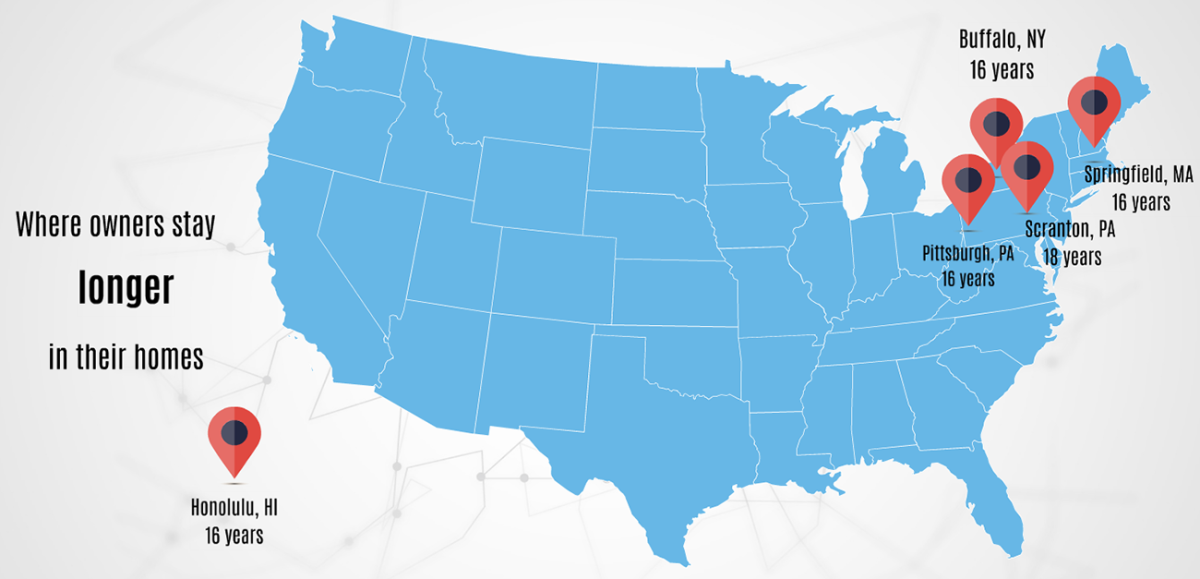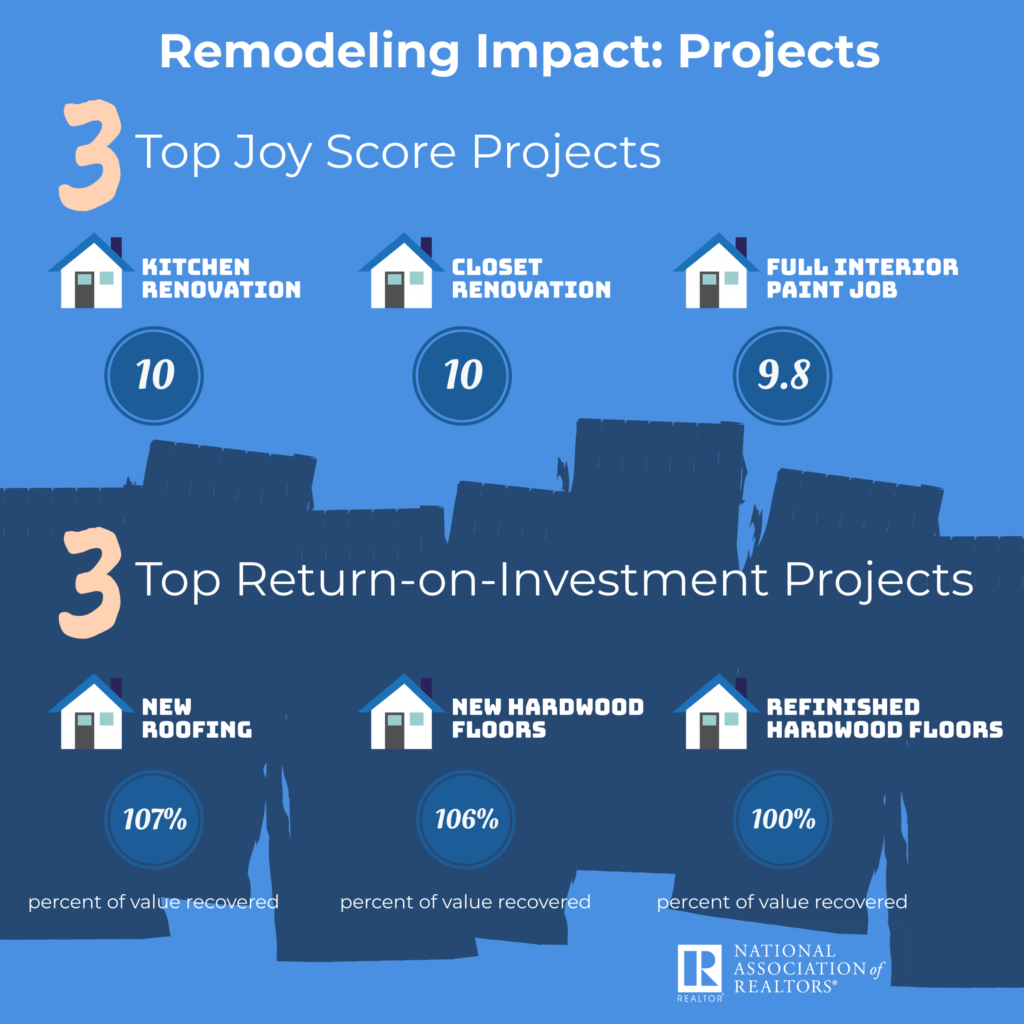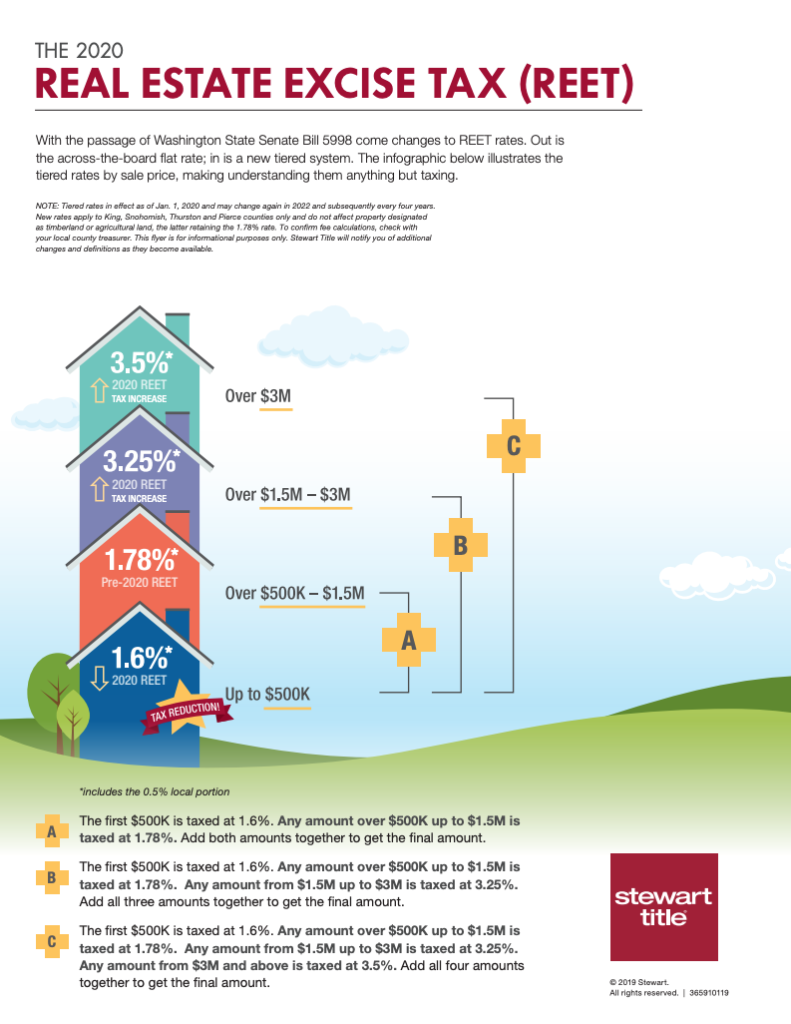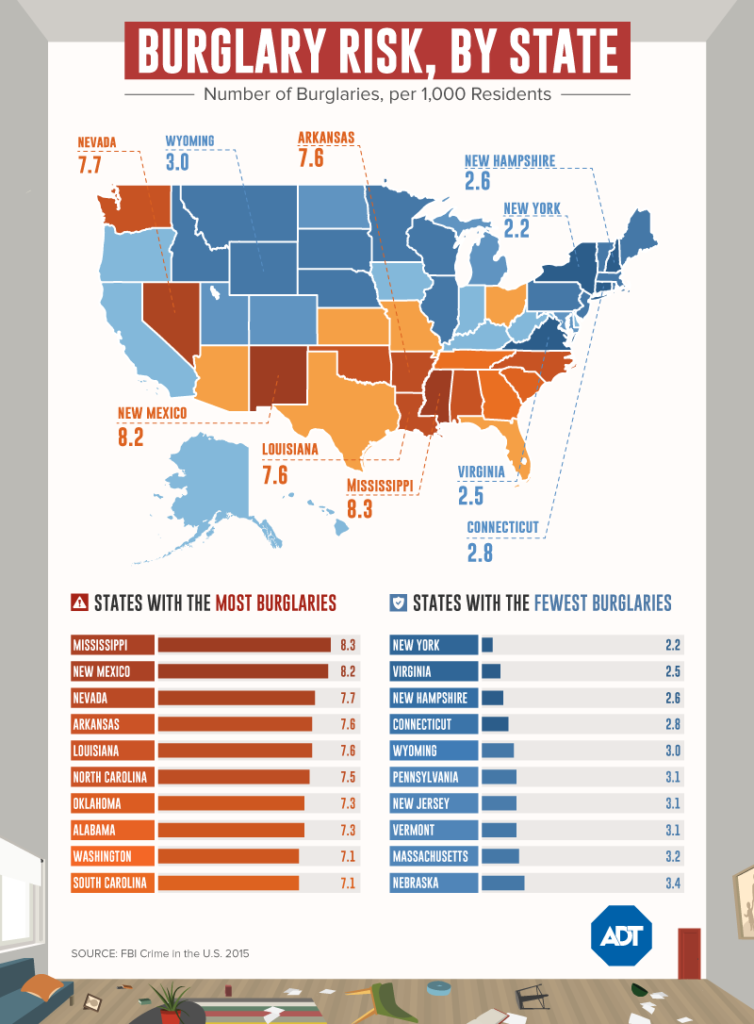2021 National Housing Market Forecast and Predictions: Back to Normal
To say 2020 was a year of surprises is an extreme understatement. What started off as a bright year for the housing market and the economy was soon derailed by a global pandemic and severe economic recession. As detailed by my colleague, George Ratiu, the economic rebound has been sharp, but is by no means complete and created distinct winners and losers among sectors in the economy. Read more detailed thoughts on the overall economic context and outlook, here. One of the big winners has been the housing market, which saw home sales and prices hit decade-plus highs following decade lows in the span of just a few months. We expect housing’s winning streak to continue in 2021 as seasonal trends normalize and some of the frenzied momentum fades thanks to fresh affordability challenges. Below you’ll find our forecast and housing market predictions on key trends that will shape the year ahead.
Realtor.com 2021 Forecast for Key Housing Indicators
| Housing Indicator | Realtor.com 2021 Forecast | |||
| Mortgage Rates | Average 3.2% throughout the year, 3.4% by end of year | |||
| Existing Home Median Sales Price Appreciation | Up 5.7% | |||
| Existing Home Sales | Up 7.0% | |||
| Single-Family Home Housing Starts | Up 9% | |||
| Homeownership Rate | 65.9% |
